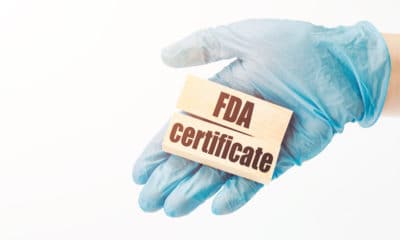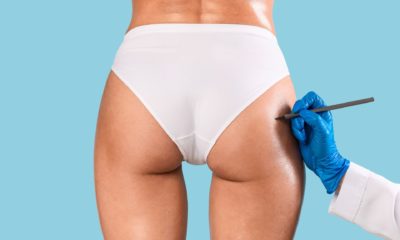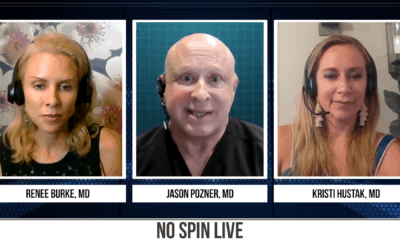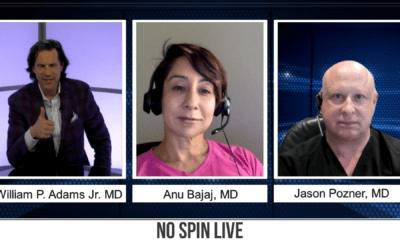Even with numerous publications and news stories with the BIA-ALCL researchers and their knowledgeable colleagues, the media continues to utilize the subject as a scandal of interest. Recently a British publication, The Daily Mail, published an article titled, “Revealed: The true cancer risk of having a boob job with hundreds of women facing a deadly time bomb.” The media’s job is apparently yet to sensationalize for the highest number of eyeballs and clicks, while the researchers and surgeons in breast augmentation work to counteract fake news with the real facts.
Board certified plastic surgeons Dr. William P. Adams Jr. of Dallas and Dr. Anand Deva of Australia discuss the fear-mongering article, cutting through sensation to present the facts about BIA-ALCL for patients.
“Facing a Deadly Time Bomb”
Breast implants, notably silicone breast implants, are no strangers to scandal and hysteria. Silicone implants were only somewhat recently approved in the US following major clinical trials and research, culminating in the devices being one of the most studied medical devices in medical history. The furor died down, but BIA-ALCL is now the driver for a new wave of hysteria regarding breast implants. In fairness, BIA-ALCL is serious business, but surgeons are confident it can be addressed successfully.
“[This article is] probably one of the more irresponsible articles that I’ve seen in a long time,” shares Dr. Adams. The onslaught of woefully misunderstood media articles shouldn’t be surprising, but remain tiresome considering that they have some power over former and future breast augmentation patients.
“We’ve been around a long, long time – 20 years studying breast implants. There’s nothing that grabs attention in headlines like a scandal,” says Dr. Deva. In a time where articles can be published rapidly and be seen globally all within a few minutes, it becomes even harder to corral the truth while excising hysteria and ignorance. Dr. Deva reminds of a quote from the New York Senator Daniel Moynihan: “Everyone is entitled to their own opinion, but not to their own fact.”
BIA-ALCL: The Facts
The “time-bomb” and “matchstick” analogies in the article are inaccurate and not based in facts. Plastic surgeons and researchers are heavily invested in fully dissecting the disease, it’s causes, outcomes, and then ultimately, prevention. “The only way we’ll get through this is to articulate clearly what the facts are,” shares Deva.
“The facts tell us two things. 1: with greater understanding of how this disease comes about, we can prevent it, and 2: we have a great opportunity to catch it early, treat and cure it. That should be the most important message.”
The current understanding of BIA-ALCL has produced a clear pathway for patients who may be at risk to be taken care of should warning signs arise. The disease typically takes years to come about, providing ample time to monitor breast implants and have routine check ups if anything seems awry. One warning sign noted by researchers is swelling of the breast, something that may or may not happen over the course of a patients life and may or may not have anything to do with BIA-ALCL. The important point is any changes in the breast should translate to a visit to the patients’ surgeons office to have a workup. This is where BIA-ALCL is caught early; the disease is very treatable.
In terms of what contributes to the disease, 4 key factors have been isolated in the pathogenesis:
- textured implants
- bacteria
- genetic predisposition
- time
All 4 factors are required for the formation of BIA-ALCL.
Out of the 4, 2 Can be Altered by Surgeons
BIA-ALCL has only ever been seen with textured implants; no smooth implant-only cases of BIA-ALCL have been discovered.
The current thinking is bacteria introduced at the time of surgery is the impetus for BIA-ALCL. While the best breast augmentation surgeons spend considerable time and research avoiding this, it’s not a terribly unusual thing to occur at the time of surgery. What is unusual is how these bacteria might cause BIA-ALCL in some while cause no problems in the vast majority.
A hypothesis regarding textured implants is that their increased surface area allows more space for bacteria to grow in. “We know that if, at the time of surgery, bacteria get attached onto the surface of a textured implant, it’s a bit like a playground for them,” shares Deva. “They’re able to find the nooks and crannies in the various textured implants grow to a much greater number. That’s been shown in our patients, our laboratory, through many many studies, and it’s consistent.”
Again, bacteria residing on an implant isn’t ideal from a surgical standpoint, but it happens and is not a guarantee of problems down the road. The difference between bacteria growth leading to BIA-ALCL and not revolves around the time and genetic predisposition factors; once the implant is in with bacteria, it’s more or less the patient’s genetics and how they are expressed over time that will decide if BIA-ALCL occurs or not.
“As these bacteria grow, they shed off all sorts of nasty bits and pieces called antigens,” explains Deva, describing the process by which BIA-ALCL genesis is theorized. “Those antigens then interact with the patient’s immune system. Over time, if the patients carries some mutations within these immune cells, or perhaps the cells or prone towards mutations – there’s the genetics – they will flip from a benign-type lymphocyte, which is immune cell, to a lymphoma. That process takes time.”
While genetics and time cannot be controlled for (at least in modern medicine), implant choice and sterility of surgery can be. Dr. Adams and Dr. Deva specifically have worked on guidance for breast surgeons to minimize contamination of implants during the time of surgery.
Media Should Have Accountability
In a world where “journalists” prioritize ratings and clicks over the facts, their coverage of BIA-ALCL can do a severe disservice to patients. Both Dr. Adams and Dr. Deva believe that the science will guide the message despite these hiccups in the road. So long as patients trust their surgeons and self-monitor their breast implants, there is little to fear from BIA-ALCL.
















Facebook
Twitter
Instagram
YouTube
RSS